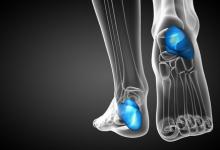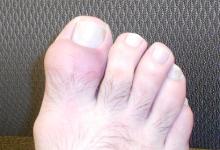2023 EULAR Psoriatic Arthritis Recommendations Save

EULAR has updated its treatment recommendations from the prior 2019 guidelines, since which there have been several newly developed agents. The updated guidance includes 7 overarching principles and 11 recommendations regarding treatment strategy and pharmacological therapies.
A consensus panel was led by an expert steering committee and a total of 36 international experts (27 rheumatologists, 2 dermatologists, 1 infectious disease specialist, 2 PsA patients, 2 HPRs and 3 rheumatology/epidemiology fellows/trainees). Following a systematic literature review and a consensus meeting of in April 2023, consensus voting, and levels of evidence were finalized.
The guideline calls for limited use on non-steroidal anti-inflammatory drugs and oral glucocorticoids; and prefers the rapid initiation of conventional DMARDs (methotrexate preferred). Further recommendations address treat to target, biological (bDMARD) use, treatments targeting skin psoriasis and management of predominant axial or entheseal disease. Drug switches and tapering in sustained remission are also addressed.
Overarching Principles
A. Psoriatic arthritis is a heterogeneous and potentially severe disease, which may require multidisciplinary treatment.
B. Treatment of psoriatic arthritis patients should aim at the best care and must be based on a shared decision between the patient and the rheumatologist, considering efficacy, safety, patient preferences and costs.
C. Rheumatologists are the specialists who should primarily care for the musculoskeletal manifestations of patients with psoriatic arthritis; in the presence of clinically relevant skin involvement, a rheumatologist and a dermatologist should collaborate in diagnosis and management.
D. The primary goal of treating patients with psoriatic arthritis is to maximize health-related quality of life, through control of symptoms, prevention of structural damage, normalization of function and social participation; abrogation of inflammation is an important component to achieve these goals.
E. In managing patients with psoriatic arthritis, consideration should be given to each musculoskeletal manifestation and treatment decisions made accordingly.
F. When managing patients with psoriatic arthritis, non-musculoskeletal manifestations (particularly skin, eye and gastrointestinal tract) should be taken into account; comorbidities such as obesity, metabolic syndrome, cardiovascular disease or depression should also be considered.
G.The choice of treatment should take account of safety considerations regarding individual modes of action to optimize the benefit–risk profile.
Recommendations
- Treatment should be aimed at reaching the target of remission or, alternatively, low disease activity, by regular disease activity assessment and appropriate adjustment of therapy.
- Non-steroidal anti-inflammatory drugs may be used to relieve musculoskeletal signs and symptoms; local injections of glucocorticoids may be considered as adjunctive therapy.
- In patients with polyarthritis, or those with monarthritis/oligoarthritis and poor prognostic factors (e.g., structural damage, elevated acute phase reactants, dactylitis or nail involvement), a csDMARD should be initiated rapidly, with methotrexate preferred in those with clinically relevant skin involvement.
- In patients with peripheral arthritis and an inadequate response to at least one csDMARD, therapy with a bDMARD should be commenced.
- In patients with peripheral arthritis and an inadequate response to at least one bDMARD, or when a bDMARD is not appropriate, a JAKi may be considered, taking safety considerations into account.
- In patients with mild disease and an inadequate response to at least one csDMARD, in whom neither a bDMARD nor a JAKi is appropriate, a PDE4 inhibitor may be considered.
- In patients with unequivocal enthesitis and an insufficient response to NSAIDs or local glucocorticoid injections, therapy with a bDMARD should be considered.
- In patients with clinically relevant axial disease with an insufficient response to NSAIDs, therapy with an IL-17A inhibitor, a TNF inhibitor, an IL-17 A/F inhibitor or a JAKi should be considered.
- The choice of the mode of action should reflect non-musculoskeletal manifestations related to psoriatic arthritis; with clinically relevant skin involvement, preference should be given to an IL-17A or IL-17A/F or IL-23 or IL-12/23 inhibitor; with uveitis to an anti-TNF monoclonal antibody; and with IBD to an anti-TNF monoclonal antibody or an IL-23 inhibitor or IL-12/23 inhibitor or a JAKi.
- In patients with an inadequate response or intolerance to a bDMARD or a JAKi, switching to another bDMARD or JAKi should be considered, including one switch within a class.
In patients in sustained remission, tapering of DMARDs may be considered.
(For JAKi use, caution is needed for patients aged 65 years or above, those who are current or past long-time smokers, with a history of atherosclerotic cardiovascular disease or other cardiovascular risk factors or with other malignancy risk factors, and with known risk factors for venous thromboembolism.)







If you are a health practitioner, you may Login/Register to comment.
Due to the nature of these comment forums, only health practitioners are allowed to comment at this time.